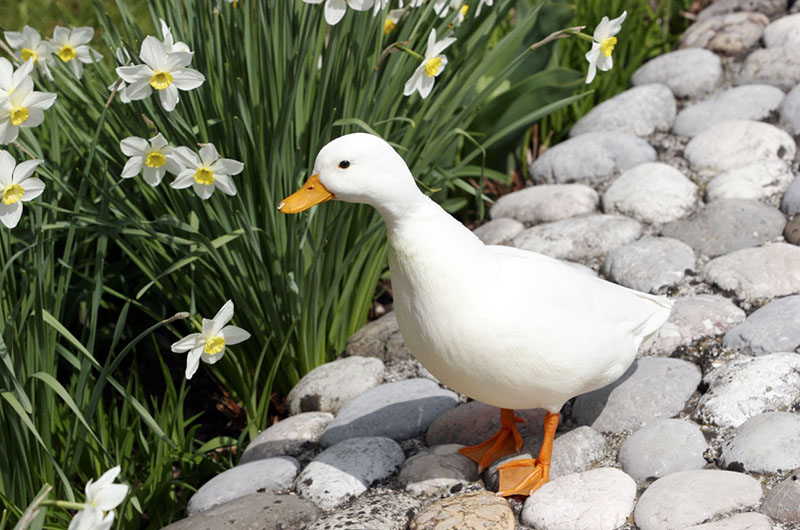Call Ducks
The Call Duck originates from the Netherlands where they were called Coy or Decoy
ducks. They are also  called Mallards because of their similar looks. Their call was used by hunters as
a decoy to draw other breeds in, like a lure. There are theories that the Call Duck
came from East Asia sometime in the 1600’s along with other small bantam breeds. This
duck came to Great Britain around the mid-1800’s. The Call Duck was recognized by
the APA in 1874.
called Mallards because of their similar looks. Their call was used by hunters as
a decoy to draw other breeds in, like a lure. There are theories that the Call Duck
came from East Asia sometime in the 1600’s along with other small bantam breeds. This
duck came to Great Britain around the mid-1800’s. The Call Duck was recognized by
the APA in 1874.
Characteristics
The Call Duck is a bantam, therefore rather small for a duck. They have short pale orange legs, plump, oval bowl-shaped body with short necks and small heads. Their beaks are orange with black spots scattered all over. The eyes are large and blue.
Standard Weight
40 oz. or less
Varieties
Blue Fawn, Blue Bibbed, Butterscotch, Buff, Chocolate, Gray, Pastel, Snowy, White
Uses
The Call Duck is used primarily as a pet.
References
All Breeds of Poultry, Origin: History: Description, Mating and Characteristics, by Frank L. Platt. Published by AMERICAN POULTRY JOURNAL, Chicago, Illinois.
Ekarius, Carol. "Ducks: Call." Pocketful of Poultry: Chickens, Ducks, Geese, Turkeys. North Adams, MA: Storey Pub., 2007. 184-85. Print.
Ives, Paul Pomeroy, 1877-. Domestic Geese And Ducks. New York: Orange Judd publishing
company, inc., 1951.
Johnson, Sibylle. "Call Ducks." Beauty Of Birds. Avianweb, n.d. Web. 13 July 2015.
Roberts, Victoria. British Poultry Standards (6th Edition). Hoboken, NJ, USA: Wiley-Blackwell, 2009. ProQuest ebrary. Web. 13 July 2015.
